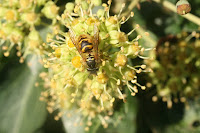Still wondering about the effect of the goose trapping on the golf course, I looked at the numbers. Neither the 30 Egyptian geese nor the 95 Canada geese were fewer than expected, so any depletion is small, but the absence of any Greylags in my count suggests that this native species may be suffering. Others who observe the area have seen a decline. The golf club haven't told us the numbers culled. As with all wild birds, Greylag geese are protected. Whilst control of wild birds can be undertaken by licence, Natural England tell us that a successful applicant must clearly demonstrate – with supporting evidence – that:
- actual damage or a problem is occurring;
- the species is actually causing the damage or problem;
- other reasonable and practical non-lethal alternatives have been considered and tried (such as scaring, trapping or proofing);
- the action is proportionate;
- and the conservation status of the species will not be negatively affected.
Nuisance is not a reason for licenced control so, typically, applicants put forward risk to human health. Such arguments may be facile where other species that present the same theoretical health risks are not subject to control. In my view, any control of Greylags on the golf course does not meet the evidence test of Natural England. Although the Greylag is native, some have argued in the past that the English populations have resulted from escaped or released birds and so are not natural, but the official advice suggests that this distinction, if it was ever real, has broken down: June 2013: Advice produced by Natural England’s Landscape & Biodiversity Team.
At leaf-fall in previous years, dense smoke has drifted across the lake when the golf club burnt damp leaves in Owl Copse. This year, they have finally stopped this unhealthy nuisance, a most welcome change.
 |
| The Mahonia by Revelstoke Road |










